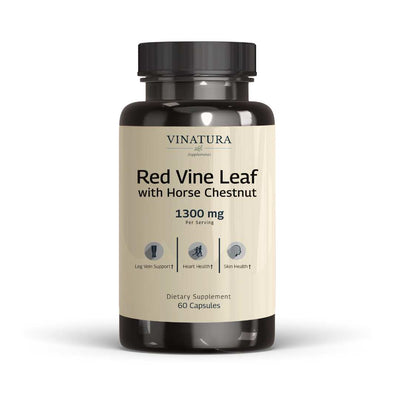
Saw Palmetto vs Maca: Which is Better for PCOS in Women?
Saw Palmetto and Maca are two natural supplements that have gained significant attention in recent years, particularly for their potential role in supporting hormone balance and managing symptoms of polycystic ovary syndrome (PCOS) in women. While both are generally regarded as safe when used appropriately and at recommended dosages, there is currently no clear consensus on which may be more effective. Emerging research suggests that each may influence female hormonal activity through different mechanisms, prompting ongoing interest in their potential therapeutic benefits.
Before exploring further, please read the disclaimer located at the end of this webpage.
Key Takeaways
- Saw Palmetto is a perennial plant native to the Southeastern U.S., typically taken at 160–320 mg/day in capsules, powders, teas, or liquid forms. It helps regulate female reproductive hormones, supports ovarian function, and reduces elevated androgen and prolactin levels often seen in women with PCOS.
- Maca, a herbaceous root from Peru, is used at 1500–3000 mg/day and is known for helping balance hormones and lower cortisol levels in women with PCOS, supporting natural ovulation.
- Both supplements have shown potential benefits for PCOS symptoms. Saw palmetto works by directly modulating reproductive hormones, while Maca helps by reducing stress-related cortisol, indirectly supporting reproductive health.
- Currently, no studies confirm the safety or effectiveness of combining saw palmetto with Maca.
Saw Palmetto Background
Saw Palmetto Origin
Saw Palmetto is an evergreen perennial plant, belonging to the Arecaceae palm family, Serenoa genus and is concentrated in most of the Southeastern United States, mainly in the areas of South Carolina, Florida, Mississippi.
You can easily identify this plant through its appearance, with characteristics such as often crawling in large patches on the ground in coastal sand dunes or in pine forests, leaves with saw-toothed thorns and dark green leaves. In addition, the height of the tree can be up to 15 feet and about 4 - 8 feet wide.
In particular, this plant has an extremely strong vitality, so even if all the foliage is burned, after only a few days, if there are enough conditions of soil, water, and light, the tree trunk will grow new leaves, and can quickly regrow and spread widely under favorable conditions.
Saw palmetto has received a lot of attention from researchers due to its active ingredients including fatty acids, plant sterols and flavonoids. The fruit in particular contains polysaccharides (sugars) that have impressive anti-inflammatory and immune-boosting properties [1].

Benefits of Saw Palmetto for Health
Since the early 1900s, the fruit of the saw palmetto plant has been historically used to support male urinary health, particularly in cases of nocturia and frequent urination related to the aging process. Today, saw palmetto is commonly used as a supplement for supporting prostate health, especially in maintaining normal prostate size and function [3, 4].
Saw palmetto is thought to help promote hormone balance, mainly by supporting healthy testosterone levels and reducing the activity of enzymes associated with prostate cell growth by inhibiting enzymes that contribute to abnormal prostate cell proliferation [3, 4].
In addition, some studies suggest that saw palmetto may support the body's natural anti-inflammatory and antibacterial responses in tissues where cell proliferation is observed, such as the prostate [1].
Beyond men's health, saw palmetto has also gained attention for its potential benefits in women.
It is often used to support overall hormonal balance, with many individuals reporting experiences of enhanced vitality, improved skin appearance, and more regular menstrual cycles after supplementation. However, individual results can vary, and further research is needed to fully understand these effects.*
Read more: 5 Best Saw Palmetto Supplements for Hormone Balance
Side Effects and Interactions of Saw Palmetto
Currently, you can supplement saw palmetto in many different ways such as dried fruit, capsules/tablets, tea, solution, lipidosterolic extract,... In general, users can supplement in any way, but need to pay a little attention to the content.
Ideally, you should only use 160 - 320 mg of saw palmetto extract per day and monitor your body's reaction carefully. If there are any unusual signs after use, you should stop immediately [2].
Using too much saw palmetto extract compared to the body's needs, or prolonged use (beyond three years) without medical supervision can have negative effects on the body. The most common signs of saw palmetto overdose are dizziness, nausea, fatigue, erectile dysfunction, etc. [2]
At the same time, saw palmetto extract can also react with some drugs such as blood thinners warfarin and clopidogrel, birth control pills or contraceptives, anticoagulants aspirin or plavix, etc. [2]
With the above information, you should consider carefully before using and consult your doctor carefully. This ensures that you take the right dose suitable for your health condition without causing unwanted side effects.
Maca Background
Maca Origin
Maca is a herbaceous plant native to Peru, belonging to the Lepidium meyenii family (like broccoli, cauliflower, kale, cabbage, etc.). This plant can survive the harsh weather in the Peruvian Andes, at altitudes above 4,000 meters [5].
Thousands of years ago, people mainly exploited the Maca root to treat respiratory diseases or rheumatism. The reason is that this plant contains many beneficial compounds such as fiber, vitamins, minerals, and highly bioactive compounds such as Macamides, Macaridine, alkaloids, and glucosinolates [5, 6].

Benefits of Maca for Health
Similar to saw palmetto, Maca is often used to support women's health, including promoting menstrual comfort, helping manage common symptoms associated with menopause, and contributing to overall cardiovascular and blood pressure wellness.
Additionally, some recent studies have explored Maca’s potential anti-inflammatory, antioxidant, and tumor-inhibiting properties, attributed to its rich profile of bioactive compounds [7, 8, 9].
Maca has also been studied for its role in supporting muscle endurance and helping to maintain stable energy levels throughout the day [10]. Furthermore, it may help support emotional well-being and reduce occasional stress [11]. However, individual experiences may vary, and ongoing research continues to investigate these potential benefits.
Side Effects & Interactions of Maca
Maca is a natural ingredient so it is generally safe if used properly, choosing transparent sourced from reputable suppliers and processed under quality control standards.
However, Maca can leave some unwanted side effects such as stomach pain, insomnia, restlessness, menstrual disorders, vomiting, flu, ... This varies from person to person, each dosage used.
At the same time, if you are suffering from hormone-related diseases such as breast cancer, cervical cancer, ovarian problems, etc., or are pregnant or breastfeeding, it is strongly advised not to use maca without medical guidance because it can cause unwanted effects [12].
It is unfortunate that Olivia Bell did not have a very positive experience with Maca root. According to her account, she used Maca consistently for several months but did not notice any significant effects during that time. This lack of clear results led her to question whether she should continue using Maca longer in hopes of eventually seeing benefits*.
Her experience highlights a common concern among users: while some people may respond well to Maca, others might require more time — or may not experience noticeable improvements at all.
Saw Palmetto vs Maca: What’s the Difference?
Although there are some similarities in their uses, these two ingredients still differ in several key aspects. The table below outlines a detailed comparison to help guide individual supplement choices based on health needs:
|
Saw palmetto |
Maca |
|
|
Origin |
Native to the southeastern U.S. (especially Florida) |
Andes mountains of Peru |
|
Part Used |
Berries |
Root |
|
Main Use |
Prostate health, urinary symptoms, reduce high androgens & prolactin levels, and hair loss prevention |
Energy, libido, sexual function, and hormone balance |
|
Mechanism |
Reduce the size of the prostate gland and improve urination |
Support adrenal gland function and may have some hormonal effects |
|
Potential Benefits |
Reduced urinary symptoms, improved prostate health |
Increased energy, enhanced libido, potential menopausal relief |
|
Side Effects |
Generally well-tolerated, mild digestive upset |
Headaches, digestive issues, or insomnia |
|
Common Forms |
Capsules, softgels, extracts |
Powder, capsules, extracts |
|
Recommended Dosage |
160 - 320 mg/day Use after meals |
1500 - 3000 mg/day Taken with food |
|
Best For |
Men & Women over 40 |
Adults seeking natural hormone support |
Maca vs Saw Palmetto: Which is Better for PCOS?
Polycystic ovary syndrome (PCOS) is commonly linked to hormonal imbalances, often characterized by elevated levels of male hormones like testosterone in women. Because of this hormonal imbalance, many individuals turn to natural remedies to help support overall hormonal wellness.
Among the available options, Maca is often recognized for its potential role in promoting balance in hormones such as estrogen and progesterone.
Some studies have also explored Maca’s ability to help maintain healthy levels of luteinizing hormone (LH) and follicle-stimulating hormone (FSH), which are important for reproductive health. By helping regulate hormonal activity, Maca may contribute to overall well-being in women.
Meanwhile, saw palmetto is noted for its ability to inhibit the enzyme 5-alpha-reductase, which converts testosterone into dihydrotestosterone (DHT), a more potent androgen.
This mechanism has made saw palmetto a popular choice for supporting urinary tract health and addressing issues like excess oil production, skin concerns, and unwanted hair growth. However, its primary effects relate to DHT regulation rather than broader hormonal balance.
Given their different areas of support, Maca and saw palmetto may offer complementary benefits depending on individual wellness goals.
Learn more: Saw Palmetto For PCOS: Does It Help And How To Use It?
Can Women Combine Maca and Saw Palmetto for PCOS?
Both maca and saw palmetto have shown potential hormonal benefits for some individuals. But can they be used together to enhance effectiveness?
Currently, there is limited scientific data on the safety or interactions between these two ingredients when taken in combination.
No clinical studies have confirmed whether combining them improves PCOS-related outcomes or poses any risks. As such, it is strongly recommended to consult with a healthcare professional before using both supplements together.
How to Take Maca and Saw Palmetto Safely?
Using them together is not recommended because there is no research showing that using the two together is highly effective. Some may wonder if these supplements can be taken at different times throughout the day. However, professional guidance is still advised.
This is because the dosage and form of each supplement vary significantly. While Maca can be used in powder, capsule/tablet form with a content of up to 3000 mg/day, saw palmetto is only up to 360 mg/day, in capsule/tablet form, tea, powder, solution, etc.
At the same time, each ingredient can interact with a certain group of drugs. Therefore, consulting a healthcare provider remains the best course of action.
Another note is that to assess individual tolerance, it is advisable to begin with a low dose instead of using a high dose right away to get quick results. In addition, carefully monitor your body's reactions to promptly handle any unexpected problems that may arise.
Learn more: When to Take Saw Palmetto: Morning or Night?
Conclusion
Both Saw Palmetto and Maca offer unique benefits that may support hormonal health in women with PCOS. Choosing the right supplement depends on individual needs and health goals. For safe and effective use, consult a healthcare professional and pair supplementation with a balanced diet and healthy lifestyle.
References
- [1] Saw palmetto Information | Mount Sinai - New York. (2015). Retrieved April 20, 2025, from Mount Sinai Health System website: https://www.mountsinai.org/health-library/herb/saw-palmetto.
- [2] SAW PALMETTO: Overview, Uses, Side Effects, Precautions, Interactions, Dosing and Reviews. (2019). Retrieved April 20, 2025, from Webmd.com website: https://www.webmd.com/vitamins/ai/ingredientmono-971/saw-palmetto.
- [3] Kwon, Y. (2019). Use of saw palmetto (Serenoa repens) extract for benign prostatic hyperplasia. Food Science and Biotechnology, 28(6), 1599–1606. https://doi.org/10.1007/s10068-019-00605-9.
- [4] Sudeep, H. V., Thomas, J. V., & K. Shyamprasad. (2020). A double blind, placebo-controlled randomized comparative study on the efficacy of phytosterol-enriched and conventional saw palmetto oil in mitigating benign prostate hyperplasia and androgen deficiency. BMC Urology, 20(1). https://doi.org/10.1186/s12894-020-00648-9.
- [5] Kubala, J. (2016, October 30). 4 Benefits of Maca Root (and Potential Side Effects). Retrieved April 20, 2025, from Healthline website: https://www.healthline.com/nutrition/benefits-of-Maca-root#what-it-is
- [6] Beharry, S., & Heinrich, M. (2017). Is the hype around the reproductive health claims of Maca (Lepidium meyenii Walp.) justified? Journal of Ethnopharmacology, 211, 126–170. https://doi.org/10.1016/j.jep.2017.08.003.
- [7] Carpio, D., Alvarado-Corella, D., Quiñones-Laveriano, D. M., Araya-Sibaja, A., José Vega-Baudrit, Monagas-Juan, M., … Villar-López, M. (2024). Exploring the chemical and pharmacological variability of Lepidium meyenii: a comprehensive review of the effects of Maca. Frontiers in Pharmacology, 15. https://doi.org/10.3389/fphar.2024.1360422.
- [8] Kandola, A. (2020, January 30). What are the benefits of Maca root? Retrieved April 20, 2025, from Medicalnewstoday.com website: https://www.medicalnewstoday.com/articles/322511.
- [9] WebMD Editorial Contributor. (2020, January 28). Health Benefits of Maca. Retrieved April 20, 2025, from WebMD website: https://www.webmd.com/diet/health-benefits-Maca.
- [10] Kang, S., Ahn, B.-O., Park, M.-H., Lim, S.-T., & Lee, E. (2023). Effects of Black Maca supplement on isokinetics muscular performance of elite women’s handball players: placebo-controlled, crossover study. Food & Nutrition Research, 67. https://doi.org/10.29219/fnr.v67.10250.
- [11] L. Stojanovska, Law, C., Lai, B., Chung, T., Nelson, K., Day, S., … Haines, C. (2014). Maca reduces blood pressure and depression, in a pilot study in postmenopausal women. Climacteric, 18(1), 69–78. https://doi.org/10.3109/13697137.2014.929649.
- [12] Maca: MedlinePlus Supplements. (2023). Retrieved April 20, 2025, from Medlineplus.gov website: https://medlineplus.gov/druginfo/natural/555.html.
Testimonial Disclaimer
*The testimonials presented on this website are provided by individuals based on their personal experiences with our products. These testimonials represent individual opinions and experiences, which may not be typical or applicable to all users of our products. Results may vary depending on a variety of factors, including individual health, lifestyle, and adherence to product usage instructions.Author

Product Disclaimer
Including an ingredient or study does not evaluate, endorse, or recommend any Vinatura product or any third-party product. Some ingredients discussed may not be used in any Vinatura product.
The content of the articles has not been evaluated by the Food and Drug Administration (FDA) and is not intended to promote or endorse any specific product. Any products sold on this website are not intended to diagnose, treat, cure, or prevent any disease.
Opinions and Endorsements
Any claims, statements, or opinions expressed in the articles are those of the author(s) and do not necessarily reflect the views or opinions of the manufacturers of the dietary supplement products. The products sold on this website are separate from the content of the articles and are not directly endorsed or associated with the information presented here.
Liability Disclaimer
The author(s) of the articles, website, and manufacturers of the dietary supplement products do not assume any liability for any potential consequences arising from the use of the information provided in the articles. Ingredient effects, dosages, and safety vary by individual, formulation, and context; some ingredients interact with medications or may be unsuitable during pregnancy or lactation. It is recommended that individuals consult with a qualified healthcare professional before making any dietary or lifestyle changes, including the use of dietary supplements.
Product Usage
Please refer to the product labels and packaging for specific usage instructions and guidelines for the dietary supplement products sold on this website.
Customer Support
For any concerns or questions regarding the dietary supplement products, please contact our customer support team, who will be more than happy to assist you.





Leave a Comment
Be the first to comment.
What do you think?